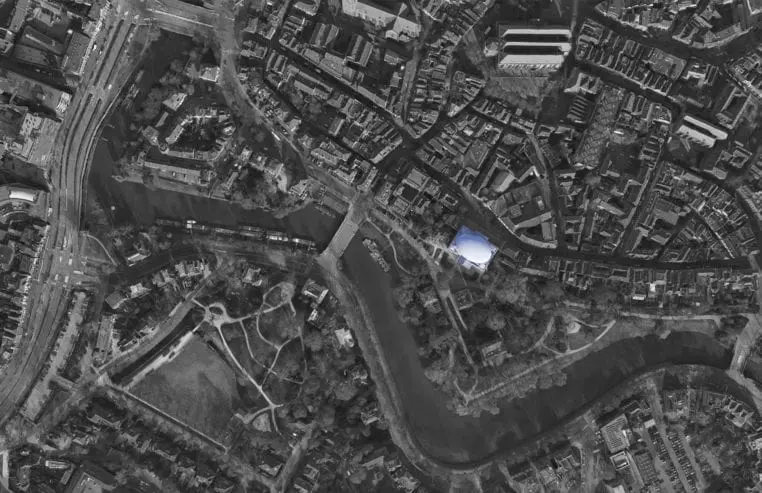The courthouse on Blijmarkt was designed by the architect Eduard Louis de Coninck in 1838 in the neo-classical style. The building has a double symmetry with a monumental entrance and a central entrance hall extending over two floors.
On the city side the free-standing building is slightly recessed in relation to the unbroken, mediaeval façade of Blijmarkt. The building is also free-standing on the canal side, in the green zone of Potgietersingel, all this gives the building a solitary character
Due to its location the building became a link between two distinct worlds: one an inward- orientated, mediaeval, fortified city with a compact and static character and the other a 19th century park with an outward-orientated, dynamic character. Finally, since 2005, following internal renovation by architect Gunnar Daan, the building has been the home of Museum De Fundatie.
Bierman Henket studio designed the extension of museum in 2010. Architect Hubert-Jan Henket succeeded in persuading the client not to add an extension next to the existing building: this would have destroyed its solitary and symmetrical character. Henket designed an extension with an autonomous volume on top of the monumental building. In the same way that the Palace of Justice links two worlds in a horizontal direction, Henket couples the classical, static building with the fluid dynamics of a contemporary extension in a vertical direction. The superstructure, just like the substructure, is symmetrical in two directions, but the shape rather resembles a rugby ball. Together, the two totally-different volumes form a new urban entity.
With the extension, the original central entrance hall has been carried through as an atrium where the two museological worlds converge. A glass lift in the atrium conveys visitors to the various floors. A glass passageway runs between the existing building and the extension − where new and old meet.
Straight through the existing building, eight steel columns stand on eight individual foundations. The columns support the new extension – with two exhibition floors that total 1,000 m2. So, structurally and architecturally, the extension is independent of the old building. The extension – also called the Art Cloud – is clad with 55,000 three- dimensional ceramic elements produced by Royal Tichelaar in Makkum. On the northern side daylight floods into the two, new exhibition floors through a large, glazed pane in the tiled superstructure. Inside, visitors have a panoramic view of the city.
































